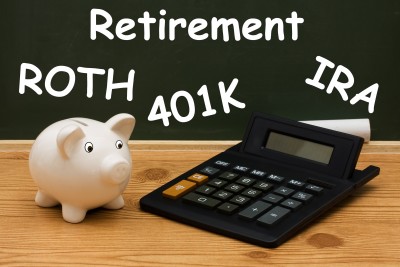A Roth IRA (Individual Retirement Account) offers a unique advantage for many investors; the magical ability to earn tax-free income. These tax-advantaged accounts allow you to indefinitely grow your investments without ever paying Federal income tax on interest, dividends, or capital gains. I say “indefinitely” because, as opposed to Traditional IRAs, there is no required minimum distribution (RMD) requirement after age 70 ½.
Not only can you reap tax-free growth throughout your lifetime, but your heirs can continue to benefit once they inherit the account. Although non-spouse beneficiaries are required to start taking annual minimum distributions from the account, they continue to benefit from tax-free growth over their lifetime (assuming they elect the “life expectancy method” option instead of taking a lump sum distribution). This is known as a “stretch IRA.” The beneficiary is able to stretch out the life of the IRA over their lifetime.
Of course, it isn’t all roses. A Roth IRA must be funded with after-tax dollars, so you don’t get the immediate tax savings when making contributions like with a Traditional IRA or 401(k). And there are income restrictions on making Roth IRA contributions. But thanks to a 2010 change in tax law, regardless of your income, investors can now convert a Traditional IRA to a Roth IRA (although this is a taxable event).
Let’s define a few terms.
Roth IRAs provide “tax-free” growth of your investments. It is tax-free because qualified withdrawals from a Roth IRA are not taxable, so any increase in the value of the account is available to spend as you please without owing Federal tax.
Contrast this with the “tax-deferred” growth provided by Traditional IRAs and 401(k)s. Earnings in these accounts are considered tax-deferred because you don’t immediately owe tax each year, but are required to pay income tax when funds are withdrawn from the account.
Beyond the beneficial tax treatment of Roth IRAs, they also provide flexibility compared to other types of retirement savings accounts. Contributions can be withdrawn at any time without penalty or tax. If converting from a Traditional IRA to a Roth IRA, converted amounts can be withdrawn without penalties 5 years after the conversion. Earnings must remain in the account until age 59 ½ to avoid penalties (with some exceptions). For investors not comfortable having their money tied up in a Traditional IRA until retirement, this flexibility to withdraw contributions may be appealing.
Ideal Candidates for a Roth IRAs:
- Expect to be in the same or a higher tax bracket in retirement
- Have income below the limit restricting contributions ($193,000 for a married couple in 2019)
- Are willing to contribute the same amount each year even without the immediate tax benefit of a Traditional IRA contribution
- Are young and have many years to benefit from the tax-free growth
- Don’t expect to need the money until well after age 70 ½ (when minimum distributions are required for Traditional IRAs)
Should I convert my 401(k) or Traditional IRA to a Roth IRA?
It is important to understand that converting to a Roth IRA is a taxable event. The amount you convert is reportable income in the year of conversion. It generally doesn’t make sense to convert from a Traditional IRA to a Roth IRA unless you are willing pay the tax hit with other money held outside your retirement accounts. Also, beware of converting such a large amount in one year that you increase your marginal tax rate.
A conversion generally makes the most sense for younger investors who expect to be in the same or a higher tax bracket during retirement and can pay the resulting tax bill from non-retirement funds. Or for older investors to “fill-up” tax brackets in years when income is below average.
Given the ramifications of a Roth IRA conversion, it is advisable to check with a tax specialist before converting. If you are already in retirement, you may also need to consider the impact additional income has on Medicare fees and the taxability of Social Security payments.


